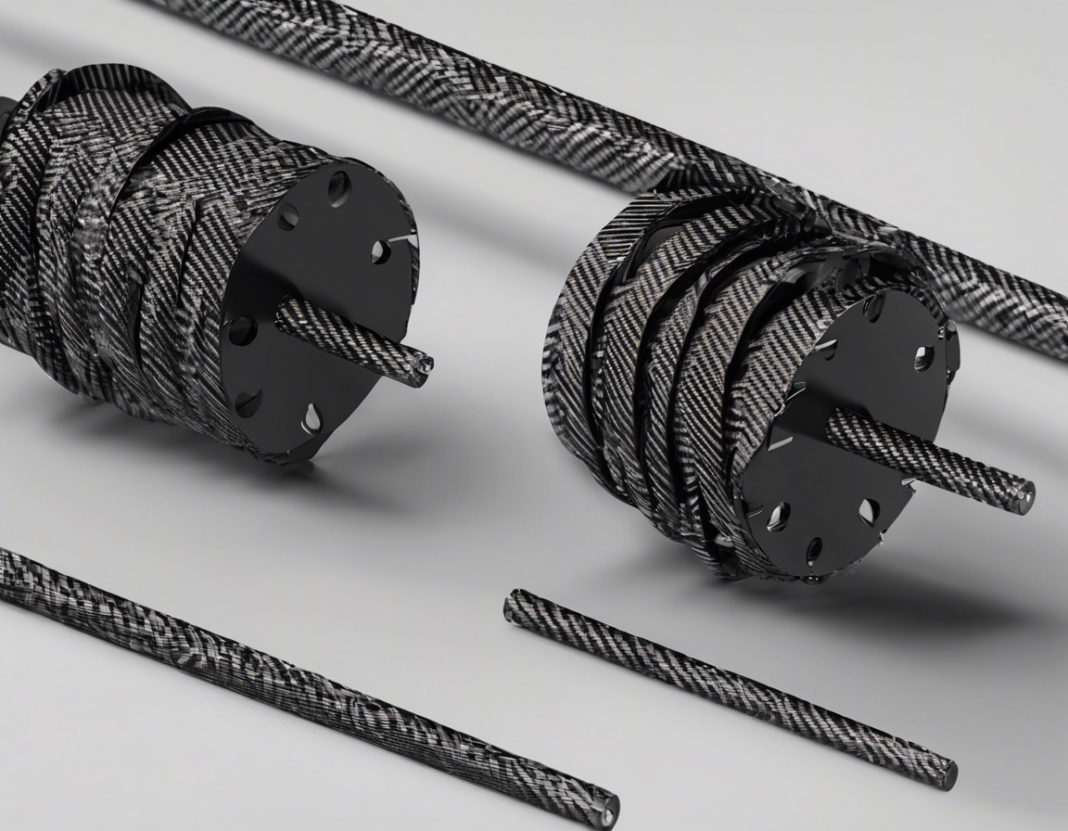Carbon fiber is a lightweight, strong material that has revolutionized many industries, from aerospace to sports equipment. Its unique properties make it an ideal choice for applications where high strength and low weight are essential, but understanding how carbon fiber behaves under strain is crucial for its optimal use. In this article, we will delve into the world of carbon fiber strain – what it is, how it affects the material, and what engineers and designers need to know when working with this versatile material.
Understanding Carbon Fiber Strain
What is Carbon Fiber Strain?
Strain is defined as the deformation of a material in response to an applied force. In the case of carbon fiber, strain refers to how much the material elongates or contracts under stress. When subjected to a load, carbon fiber will deform according to the magnitude of the force applied.
Types of Carbon Fiber Strain
There are two main types of strain that carbon fiber experiences:
-
Tensile Strain: This occurs when a force is applied to stretch the material, causing it to elongate. Tensile strain is a critical consideration in applications where the material needs to withstand pulling forces.
-
Compressive Strain: Compressive strain happens when a force is applied to compress the material, causing it to contract. This type of strain is essential to consider in applications where the material is subjected to crushing or buckling forces.
Factors Affecting Carbon Fiber Strain
Several factors can influence how carbon fiber behaves under strain, including:
-
Fiber Orientation: The direction in which the carbon fibers are aligned can significantly impact the material’s response to strain.
-
Resin Matrix: The type of resin used in carbon fiber composites can affect how the material deforms under stress.
-
Curing Process: The temperature and pressure conditions during the curing process can also impact the material’s strain characteristics.
Behavior of Carbon Fiber Under Strain
Carbon fiber exhibits unique behavior when subjected to strain, making it a preferred choice for many high-performance applications. Some key points to consider include:
-
High Strength-to-Weight Ratio: Carbon fiber is known for its exceptional strength-to-weight ratio, making it ideal for applications where lightweight materials with high strength are required.
-
Stiffness: Carbon fiber is stiffer than many traditional materials like steel or aluminum, allowing it to maintain its shape and structural integrity under strain.
-
Fatigue Resistance: Carbon fiber is highly resistant to fatigue failure, making it a durable choice for applications where the material will be subjected to repeated loading.
-
Anisotropic Properties: Carbon fiber exhibits anisotropic properties, meaning its strength and stiffness can vary depending on the direction of the applied load.
Design Considerations for Carbon Fiber Strain
When designing with carbon fiber, engineers and designers must take into account the material’s unique strain characteristics. Some key considerations include:
-
Optimized Fiber Orientation: By aligning the carbon fibers in the optimal direction, designers can maximize the material’s strength and stiffness in critical load-bearing areas.
-
Balancing Strength and Flexibility: Designers must strike a balance between strength and flexibility in carbon fiber components to ensure they can withstand the intended loads without becoming too rigid.
-
Impact Resistance: While carbon fiber is highly resistant to fatigue, it can be susceptible to impact damage. Designers should consider incorporating protective measures to enhance impact resistance.
Testing Carbon Fiber Strain
To ensure the structural integrity and performance of carbon fiber components, testing for strain is essential. Some common methods used to test carbon fiber strain include:
-
Tensile Testing: Tensile testing involves applying a pulling force to a carbon fiber specimen to measure its elongation and tensile strength.
-
Compression Testing: Compression testing applies a compressive force to a carbon fiber sample to evaluate its deformation behavior under crushing loads.
-
Flexural Testing: Flexural testing assesses the bending stiffness and strength of carbon fiber components by subjecting them to a bending load.
Conclusion
In conclusion, understanding carbon fiber strain is crucial for maximizing the performance and longevity of components made from this advanced material. By considering factors such as fiber orientation, resin matrix, and curing process, designers and engineers can create innovative solutions that leverage the unique properties of carbon fiber. With careful design considerations and thorough testing, carbon fiber can continue to push the boundaries of what is possible in various industries.
Frequently Asked Questions (FAQs)
- Is carbon fiber prone to delamination under strain?
Carbon fiber composites can be prone to delamination if not properly designed or manufactured. Ensuring proper fiber orientation and resin impregnation can help mitigate delamination risks.
- Can carbon fiber components be repaired if they experience strain-induced damage?
In some cases, carbon fiber components can be repaired using specialized techniques such as patch repairs or resin infusion. However, the extent of the damage will determine the feasibility of repair.
- How does temperature affect carbon fiber strain behavior?
Extreme temperatures can impact the mechanical properties of carbon fiber, affecting its strain behavior. Designers should consider the operating temperature range when using carbon fiber in high-temperature applications.
- What are the main advantages of using carbon fiber in structural applications?
Carbon fiber offers advantages such as high strength-to-weight ratio, stiffness, fatigue resistance, and corrosion resistance, making it an ideal choice for structural applications where performance and durability are essential.
- Are there limitations to using carbon fiber in high-impact applications?
While carbon fiber is highly resilient to fatigue, it can be susceptible to impact damage. Designers should incorporate impact-resistant features or consider alternative materials for high-impact applications.
